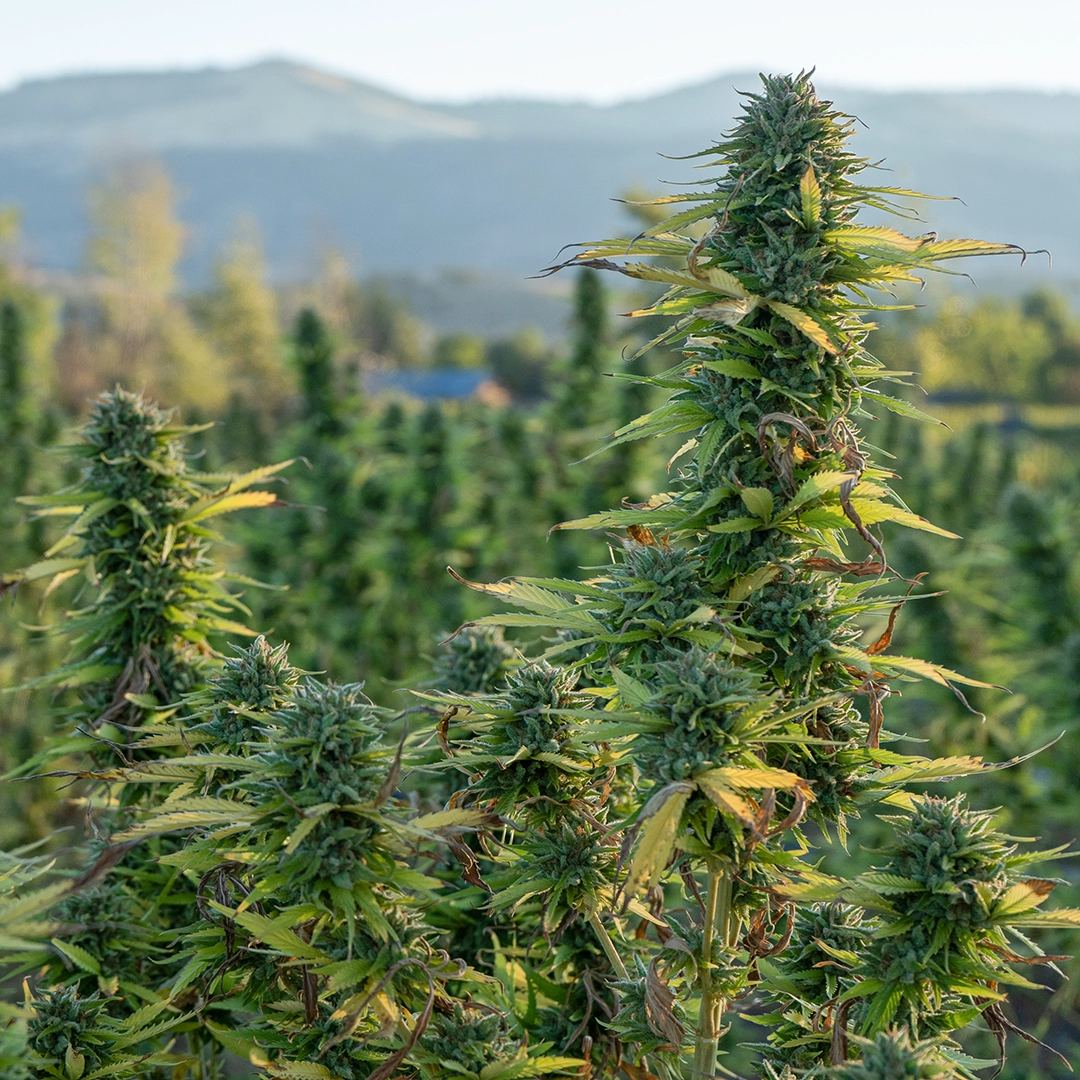Cannabinoids are naturally occurring compounds found in the Cannabis plant. Of these, delta-9-tetrahydrocannabinol (THC) and cannabidiol (CBD) are the most well-known and extensively researched. These compounds interact with cannabinoid receptors in the body’s endocannabinoid system, which is involved in various physiological processes including pain sensation, mood, memory, and appetite.
What are Cannabinoids?
Cannabinoids are a group of chemical compounds that are most famously found in the cannabis plant. In fact, cannabis is the only plant known to produce these specific chemicals. Scientists have discovered more than 100 unique cannabinoids within the cannabis plant. These individual compounds interact synergistically through a phenomenon known as the ‘entourage effect,’ amplifying their respective benefits when they are consumed in unison.
What is the “Entourage Effect”?
The entourage effect is a concept that suggests the synergistic interaction of various compounds found in cannabis, such as cannabinoids, terpenes, and other phytochemicals. According to this theory, these compounds work together to enhance or alter the overall effects of the plant, creating a more comprehensive and balanced therapeutic effect compared to isolated compounds.
Cannabinoids in Hemp and Marijuana
While both hemp and marijuana are strains of the Cannabis plant, they are distinguished largely by their THC content. Marijuana typically contains high levels of THC, which is the psychoactive compound responsible for the “high” associated with marijuana use. Hemp, on the other hand, contains negligible amounts of THC (0.3% or less by law in many jurisdictions) but can be rich in CBD, which does not have psychoactive effects.
The Endocannabinoid System
Cannabinoids, both endogenous (produced by the body) and exogenous (found in plants like cannabis), interact with the endocannabinoid system (ECS) in a complex and intricate manner. The ECS relies on cannabinoid receptors, primarily CB1 and CB2 receptors, to receive and transmit signals. When cannabinoids bind to these receptors, they can modulate various physiological processes, including mood, pain sensation, appetite, and inflammation.
Research continues to explore and discover new information about cannabinoids and our endocannabinoid system. The results so far have been consistently positive and stellar as it concerns our state of wellness. We are certain that the coming years will reveal new riches to be found in cannabinoids. This could include the discovery of other beneficial cannabinoids!
Noteable Cannabinoids
While over 100 different cannabinoids have been identified, the following are some of the most well-known and studied.
CBD (Cannabidiol)
CBD is short for Cannabidiol which is one of the many Cannabinoids in the Cannabis plant. CBD found in the Cannabis plant is 100% natural. Our brain has receptors known as the CB1 and CB2 receptors which are responsible for accepting CBD and other Cannabinoids into our bodies.
To learn more about CBD, read our article “What is CBD?“.
CBG (Cannabigerol)
CBG is another cannabinoid found in cannabis plants, including both marijuana and hemp varieties. It is considered a minor cannabinoid because it is typically present in lower concentrations compared to cannabinoids like THC (tetrahydrocannabinol) and CBD (cannabidiol).
To learn more about CBG, read our article “CBD vs CBG: Similarities and Differences“.
CBC (Cannabichromene)
Another non-psychoactive cannabinoid, CBC may play a role in promoting brain health and has potential anti-inflammatory and anti-cancer properties.
CBN (Cannabinol)
CBN is derived from the degradation of THC (tetrahydrocannabinol) over time as the cannabis plant ages or is exposed to heat or light. CBN is often present in trace amounts in fresh cannabis but can increase in concentration as the plant undergoes degradation processes.
The most commonly recognized effect of CBN is its potential as a sedative or sleep aid. CBN is often associated with promoting relaxation and inducing sleepiness. This sedative effect has led to its reputation as a “sleep cannabinoid.”
You can find CBN in a select number of Fern Valley Farms products, including Gummies and Tinctures.
THCV (Tetrahydrocannabivarin)
This is similar to THC, but has very different effects. In low doses, it doesn’t seem to cause the same intoxicating effects as THC, but in high doses, it may produce psychoactive effects. It has been researched for its potential in treating metabolic disorders and diabetes.
Find THCV in our Grape Soda Disposable Vape!
Delta 9 THC (Tetrahydrocannabidiol)
THC is the primary psychoactive compound found in cannabis plants. It is the chemical responsible for producing the intoxicating effects commonly associated with marijuana use. THC interacts with cannabinoid receptors in the brain, particularly the CB1 receptors, resulting in various physiological and psychological effects. These effects can include euphoria, relaxation, altered perception of time, increased appetite, and impairment of memory and coordination.
You can find Delta 9 THC in a select number of Fern Valley Farms products, including Gummies and our new THC Honey!
Delta 8 THC (Tetrahydrocannabidiol)
Delta 8 THC is a cannabinoid that occurs naturally in cannabis plants but is typically found in relatively low concentrations. Delta 8 has gained attention due to its legal status in some areas where Delta 9 remains illegal or restricted. This is because Delta 8 can be derived from hemp, which is legal under the 2018 U.S. Farm Bill, as long as the Delta 9 concentration is below a certain threshold (0.3% in the United States).
To learn more about Delta 8 THC, read our article “What is Delta 8 THC?“.
THCA (Tetrahydrocannabinolic Acid)
This is the raw, non-psychoactive form of THC that converts to the psychoactive compound when heated (a process known as decarboxylation). It has potential anti-inflammatory and neuroprotective effects.
If you want to learn more about this process of conversion, visit our post “Decarboxylation Demystified“.
HHC (Hexahydrocannabinol)
HHC is known for its psychoactive properties and has been reported to produce effects similar to those of THC, such as euphoria, relaxation, and altered perception. However, HHC isn’t naturally occuring in hemp plants, and must be synthesized in a laboratory setting.
To learn more about HHC, read our article “What is HHC?“.
In Conclusion..
In conclusion, cannabinoids are diverse chemical compounds found in cannabis plants, with the most well-known being THC and CBD. They interact with the endocannabinoid system within our bodies, affecting numerous physiological processes, including mood, pain sensation, appetite, and memory.
The therapeutic potential of cannabinoids is extensive, with emerging research suggesting potential benefits for a variety of health conditions, including chronic pain, epilepsy, multiple sclerosis, and mental health disorders. However, the full extent of these effects, and their potential side effects, remains under active investigation.
It’s also essential to remember that while some cannabinoids are legal, others, like THC, have legal restrictions in many regions, highlighting the need for comprehensive policy discussion and reform in the light of burgeoning scientific evidence.

